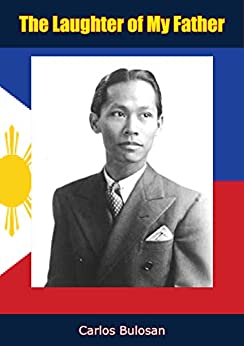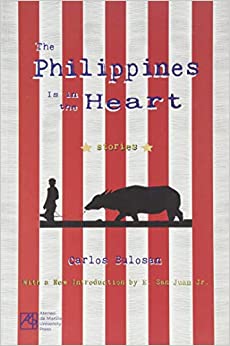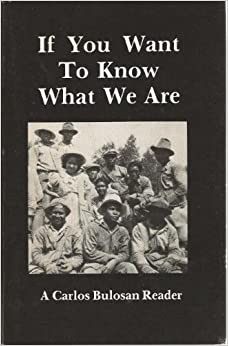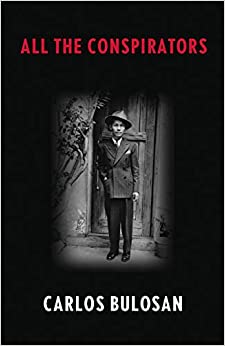Background
Carlos Bulosan was born on November 24, 1913 (some sources say 1911), in Binalonan, Pangasinan, Philippines. He was one of several children of farming parents, Simeon Bulosan and Marta Sampayan.

Carlos Bulosan in the 1940s
Carlos Bulosan (right) with union workers, 1950s
Carlos Bulosan






(The rich man’s children ate their good food and grew thin...)
The rich man’s children ate their good food and grew thinner and more peaked. The Bulosans, next door, went on eating their poor and meagre food, laughed, and grew fat. So the rich man sued Father Bulosan for stealing the spirit of his food. And Father paid him in his own coin, while the laughter of the Bulosans and the judge drove the rich man’s family out of the courtroom. The Bulosans lived in Binalonan, in the Philippine province of Pangasinan. But the episodes of Father’s history that his son Carlos retells belong to universal and timeless comedy. No one can remain unmoved by Father’s excursions into politics, cock-fighting, violin-playing, or the concoction of love-potions. Twenty-four such stories make up the rich and funny collection called The Laughter of My Father.
https://www.amazon.com/Laughter-My-Father-Carlos-Bulosan-ebook/dp/B07SHSHTQS/ref=sr_1_1?dchild=1&keywords=The+Laughter+of+My+Father+Bulosan&qid=1596615559&s=books&sr=1-1
1944

(A posthumous response to his classic America Is in the He...)
A posthumous response to his classic America Is in the Heart, this collection of original, hitherto unpublished stories by Carlos Bulosan reveals the innovative, radical intellect sublimated in his comic masterpiece, The Laughter of My Father. Bulosan's homecoming explodes the stereotype of the author as a subaltern mimic and offers us a promise of celebrating the advent of proletarian jouissance and national liberation. This is an unprecedented performance of the convivial fashioning of the Filipino artist as the exile forging the conscience of the race.
https://www.amazon.com/Philippines-Heart-Carlos-Bulosan/dp/9715507859/ref=sr_1_1?dchild=1&keywords=The+Philippines+Is+in+the+Heart%3A+A+Collection+of+Short+Stories+Bulosan&qid=1596617153&s=books&sr=1-1
1978

(This volume offers some of Carlos Bulosan's work on the l...)
This volume offers some of Carlos Bulosan's work on the lives and emerging consciousness of Filipinos in America in the 1930s and 1940s.
https://www.amazon.com/You-Want-Know-What-Are/dp/0931122295/ref=sr_1_1?dchild=1&keywords=If+You+Want+to+Know+What+We+Are%3A+A+Carlos+Bulosan+Reade&qid=1596626822&s=books&sr=1-1-spell
1983

(In this mystery thriller set at the end of World War II, ...)
In this mystery thriller set at the end of World War II, American Gar Stanley returns to his native Philippines to help his childhood sweetheart locate her missing husband in the wake of a Japanese ambush. With Clem's ring as his only clue, Gar moves from the nightclubs of Manila to the mountains of Baguio, from mansions to hovels, bordellos to churches. He pursues and is pursued by bankers, matrons, hoboes, warriors, and thugs. Gar quickly realizes that no one is who they seem in this war-ravaged country. He must move quickly to stay ahead of the deadly conspirators before they silence his friend. Bulosan's purposely mysterious authorship is illuminated in the thought-provoking introduction by Caroline S. Hau and Benedict Anderson. The short story "The Filipino Houseboy," also included in this volume, helps to establish Bulosan as the author of All the Conspirators.
https://www.amazon.com/All-Conspirators-Bulosan/dp/029598497X/ref=sr_1_1?dchild=1&keywords=All+the+Conspirators+Bulosan&qid=1596627480&s=books&sr=1-1
1998
Carlos Bulosan was born on November 24, 1913 (some sources say 1911), in Binalonan, Pangasinan, Philippines. He was one of several children of farming parents, Simeon Bulosan and Marta Sampayan.
Carlos Bulosan completed only three years of schooling and, drawn to the United States by the promises of wealth and education and the dream of becoming a writer, he followed two older brothers and purchased a steerage ticket to Seattle for seventy-five dollars, arriving on July 22, 1930, while still a teenager.
In the United States, Carlos Bulosan worked in an Alaskan fish cannery and as a fruit and vegetable picker in Washington and California. In 1932, he was published in a poetry anthology. While living with one of his brothers in Los Angeles, he had already submitted articles for small newspapers and had done some writing for The New Tide, a bimonthly Filipino publication. The New Tide was a radical literary magazine that brought Bulosan into a wider circle of fellow writers. By the early 1940s, he was gaining national recognition.
In 1942, he published his first book of poems, Letter from America, and The Voice of Bataan was published the following year. Also in 1943, the Saturday Evening Post commissioned articles on the Four Freedoms, and Bulosan was paid one thousand dollars for "Freedom from Want," an essay that was illustrated in the magazine by the famous artist Norman Rockwell. Stories, poems, and essays by Bulosan began to appear during the early 1940s in magazines such as Town and Country, Harper’s Bazaar, and Poetry. Bulosan’s first collection of stories, The Laughter of My Father, was published in 1944 and was broadcast around the world to American troops fighting in World War II; it soon became a bestseller.
In 1946, Harcourt Brace published America Is in the Heart, which also became popular, but Bulosan’s career was already beginning to falter, in part because of two factors beyond his control. In 1944, he had published a short story, The End of the War, in The New Yorker, and he was accused of plagiarism by another writer. The charges were never proven, but the claim and the publicity it aroused damaged Bulosan’s career.
The 1950s ushered in the anti-Communist fervor of Senator Joe McCarthy and the Un-American Activities Committee. Carlos Bulosan and fellow radicals were "blacklisted" even by some Filipino writers. Bulosan continued his labor union activities and edited the 1952 yearbook of the Union Local 37 International Longshoremen Workers Union (ILWU).
Bulosan wrote other books, including novels, but most of his later works were published posthumously by scholars who went through his papers and assembled individual titles. E. San Juan, Jr., has been responsible for many of these volumes, including The Philippines Is in the Heart: A Collection of Short Stories (1978), On Becoming Filipino: Selected Writings of Carlos Bulosan (1995), and The Cry and the Dedication (historical fiction, 1995), a novel set in the Philippines during and after World War II.
Carlos Bulosan is best remembered for his semi-fictional, semi-autobiographical novel America Is In the Heart - a staple in American Ethnic Studies and Asian American Studies classes. In 2004 the Carlos Bulosan Heritage Center was opened in Queens, New York, in recognition of his struggles and commitment to the Filipino people.
(A posthumous response to his classic America Is in the He...)
1978(In this mystery thriller set at the end of World War II, ...)
1998(This volume offers some of Carlos Bulosan's work on the l...)
1983(The rich man’s children ate their good food and grew thin...)
1944Between 1935 and 1941, Carlos Bulosan became involved in the labor movement, organizing unions to protect his fellow Filipino workers. In Los Angeles, he met labor organizer Chris Mensalves. Together, they organized the United Cannery and Packing House Workers of America (UCAPHWA).
Carlos Bulosan loved the public library and reportedly read a book a day, many by the classic authors of American literature, including Edgar Allan Poe, Walt Whitman, Theodore Dreiser, and Ernest Hemingway.
Physical Characteristics: Never a healthy man, Carlos Bulosan was diagnosed with tuberculosis in 1936, and he spent the next several years in Los Angeles General Hospital, undergoing surgeries and convalescence.
Quotes from others about the person
"Of the million Filipinos who found themselves in the United States in the two decades before and after World War II, Carlos Bulosan, his entire life & works, represents the heroic struggles and sacrifices of the Filipino community as a colonized and an emergent national agency in world history." - E. San Juan Jr.
Carlos Bulosan didn't have his own family.
